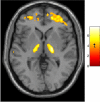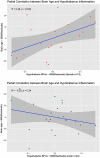Positron Emission Tomography reveals age-associated hypothalamic microglial activation in women
- PMID: 35922659
- PMCID: PMC9349172
- DOI: 10.1038/s41598-022-17315-8
Positron Emission Tomography reveals age-associated hypothalamic microglial activation in women
Abstract
In rodents, hypothalamic inflammation plays a critical role in aging and age-related diseases. Hypothalamic inflammation has not previously been assessed in vivo in humans. We used Positron Emission Tomography (PET) with a radiotracer sensitive to the translocator protein (TSPO) expressed by activated microglia, to assess correlations between age and regional brain TSPO in a group of healthy subjects (n = 43, 19 female, aged 23-78), focusing on hypothalamus. We found robust age-correlated TSPO expression in thalamus but not hypothalamus in the combined group of women and men. This pattern differs from what has been described in rodents. Prominent age-correlated TSPO expression in thalamus in humans, but in hypothalamus in rodents, could reflect evolutionary changes in size and function of thalamus versus hypothalamus, and may be relevant to the appropriateness of using rodents to model human aging. When examining TSPO PET results in women and men separately, we found that only women showed age-correlated hypothalamic TSPO expression. We suggest this novel result is relevant to understanding a stark sex difference in human aging: that only women undergo loss of fertility-menopause-at mid-life. Our finding of age-correlated hypothalamic inflammation in women could have implications for understanding and perhaps altering reproductive aging in women.
© 2022. The Author(s).
Conflict of interest statement
The authors declare no competing interests.
Figures



References
Publication types
MeSH terms
Substances
Grants and funding
LinkOut - more resources
Full Text Sources
Medical

